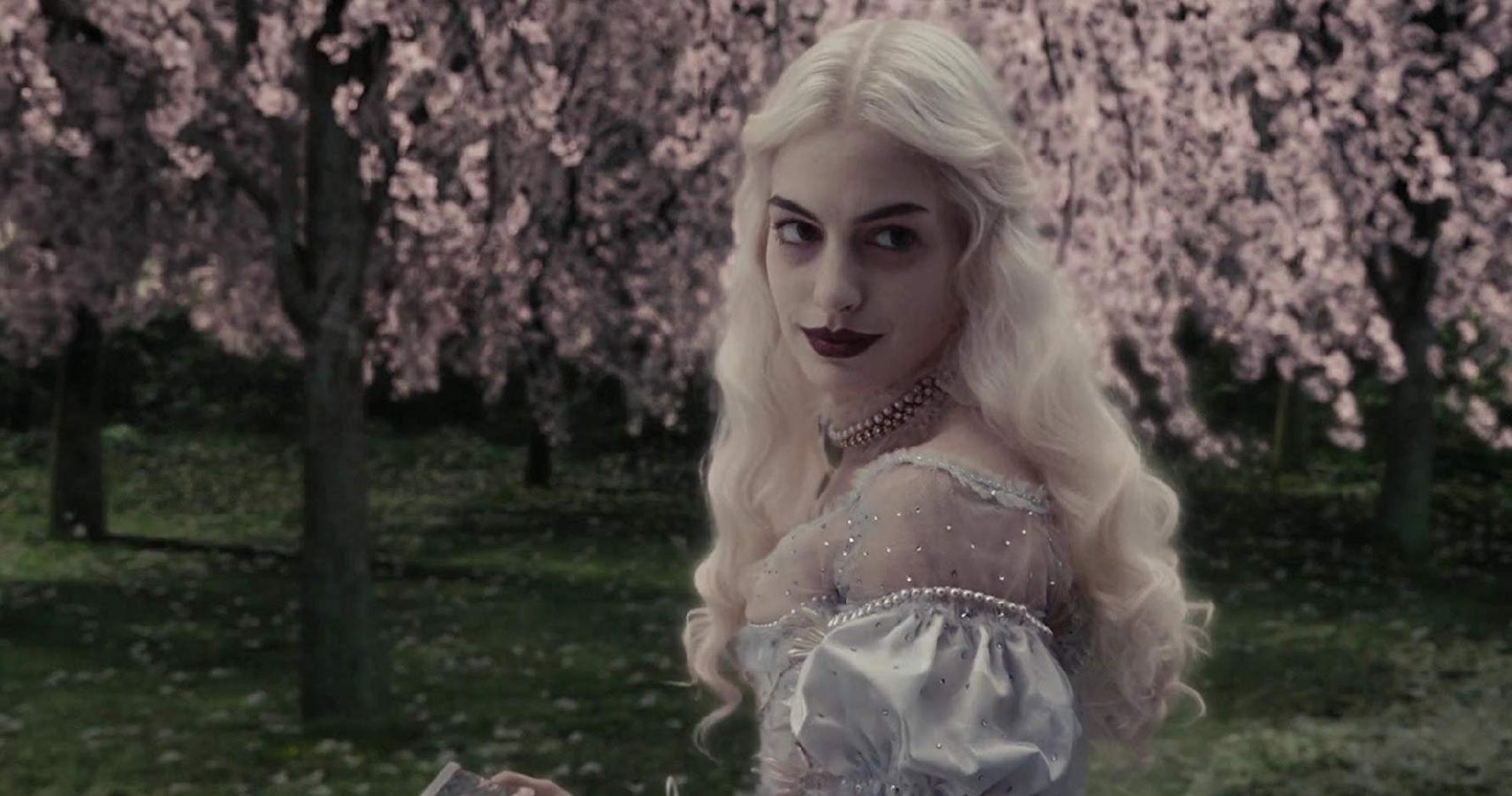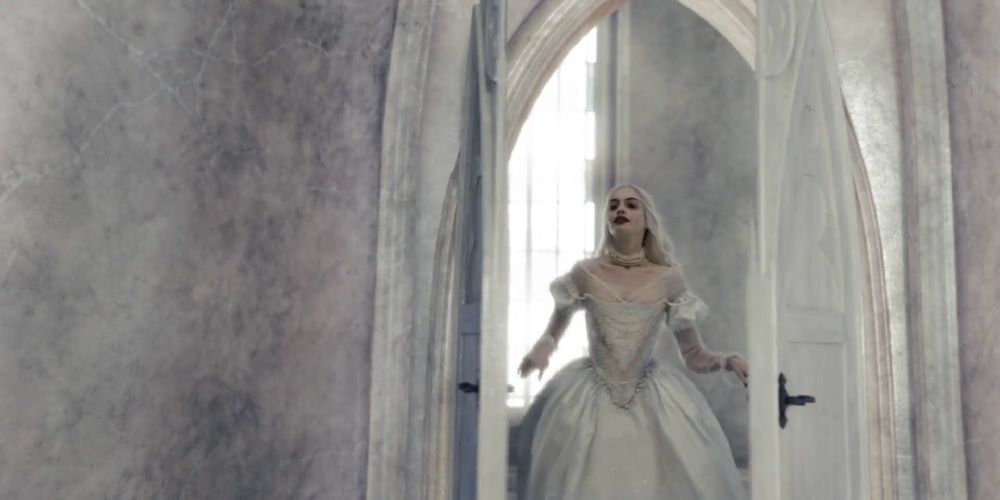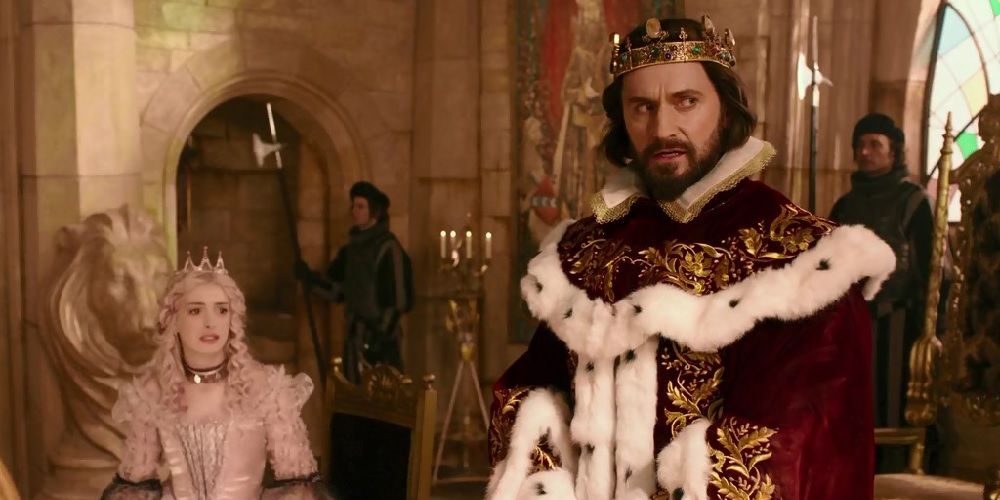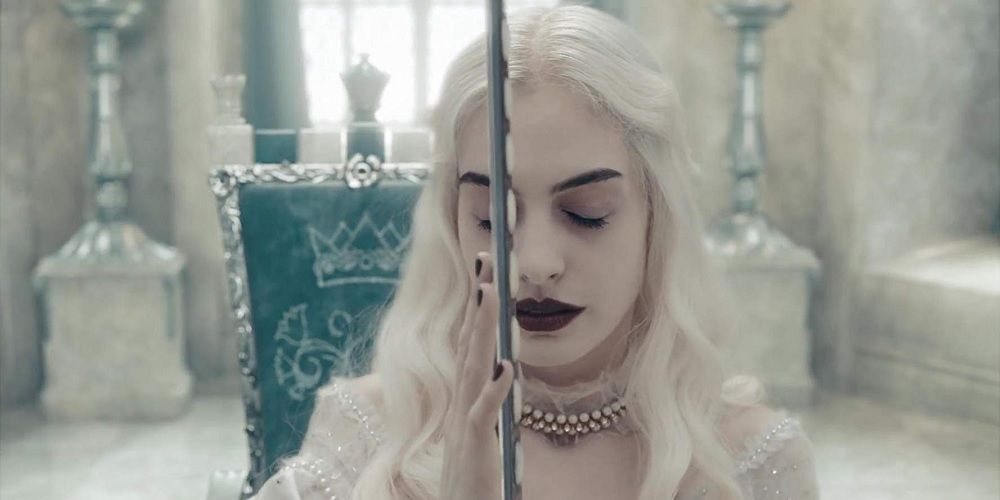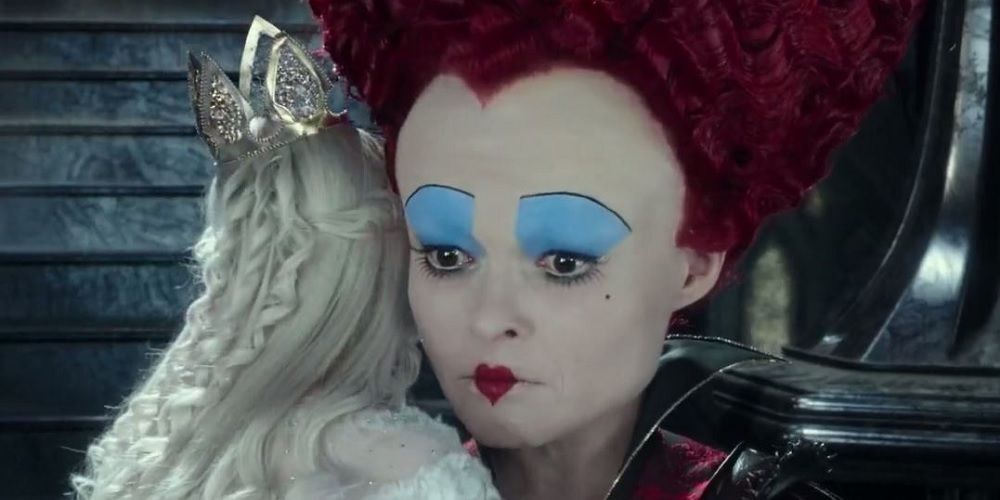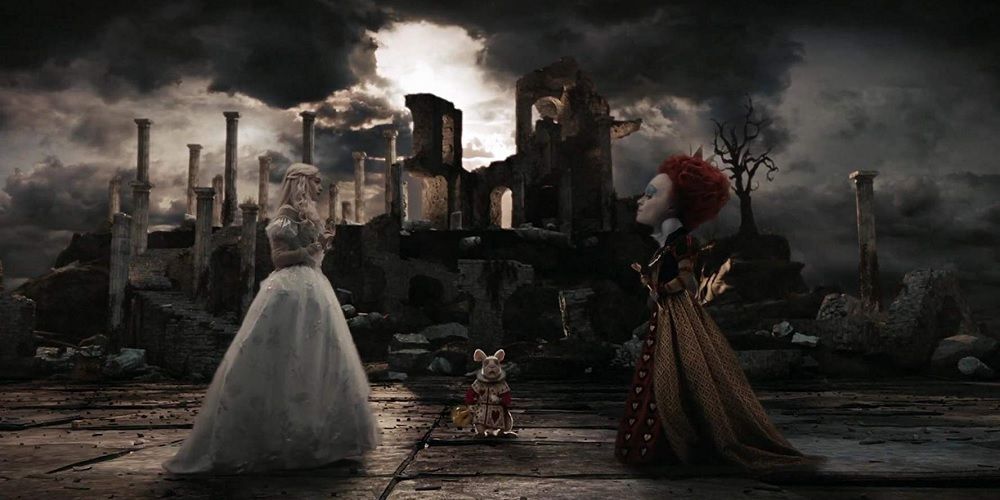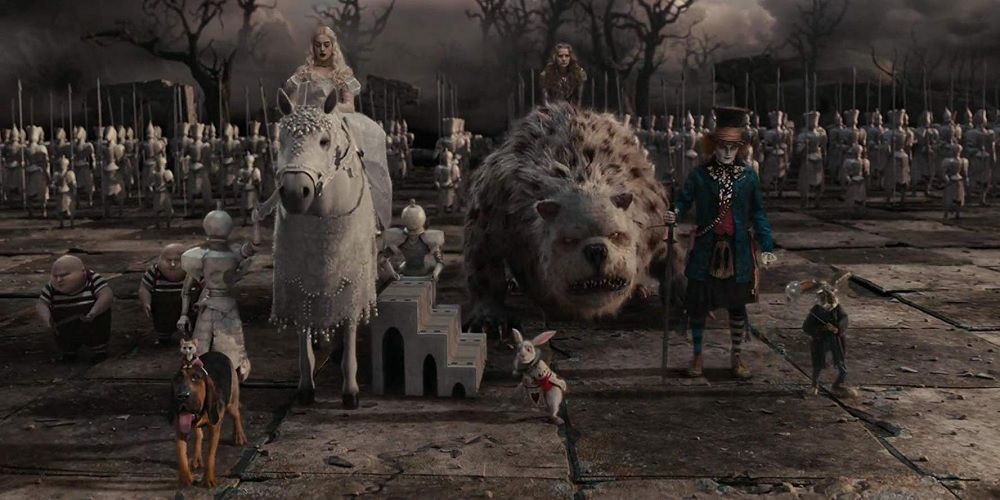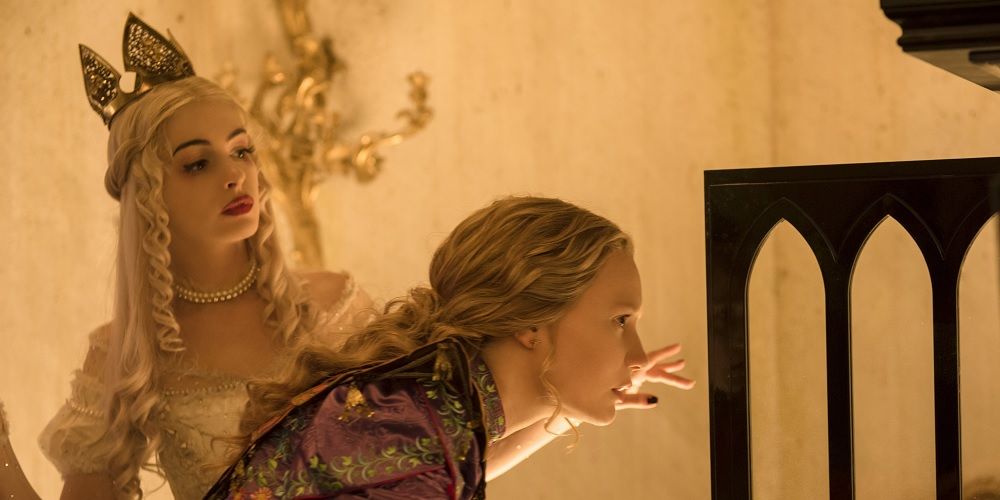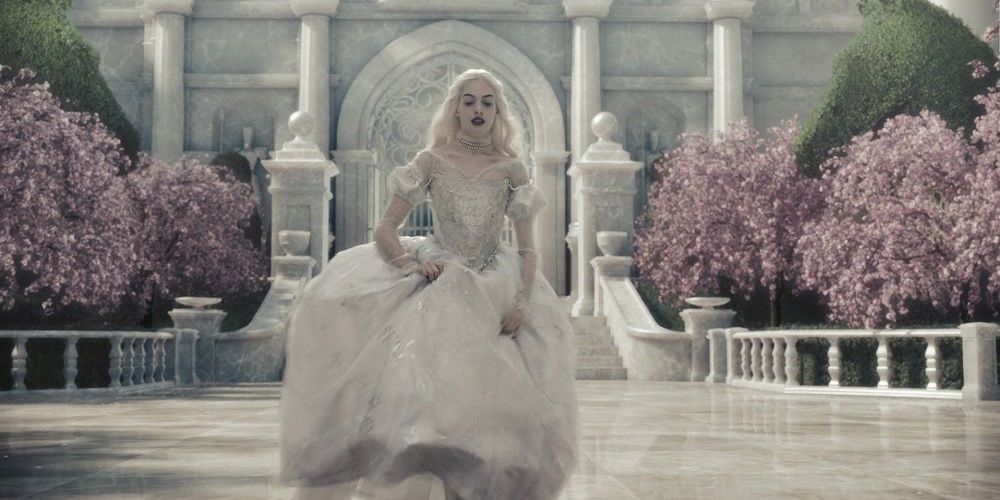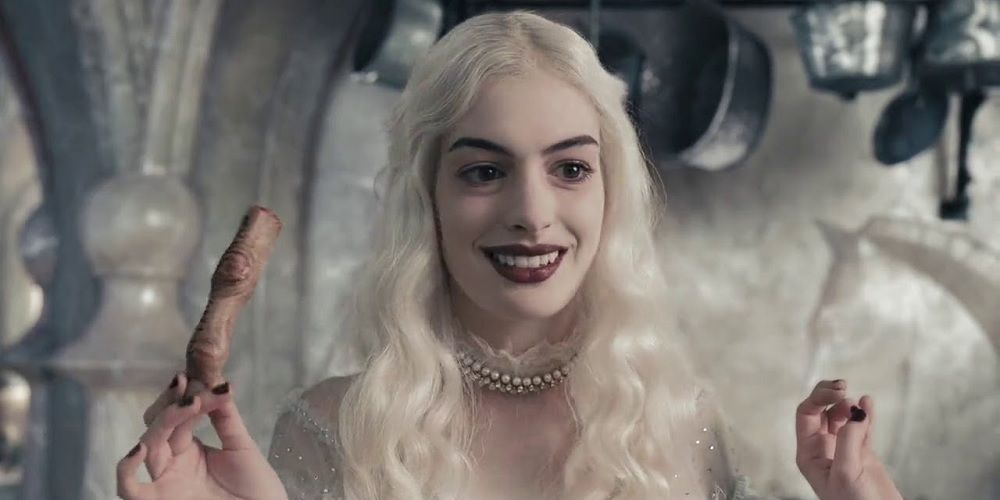The White Queen is a character from Lewis Carroll's Through the Looking Glass, a sequel to his novel Alice's Adventures in Wonderland. Both novels have been adapted, and sometimes combined in the process, numerous times, the most recent of which are the Tim Burton produced films Alice in Wonderland (2010) and Alice: Through the Looking Glass (2016).
The White Queen is one of the main characters in both of these films, where she is also given the name Mirana of Marmoreal and is played by Anne Hathaway. Like many of the residents in Wonderland, or Underland, not a lot is known for certain about her. However, if viewers really pay attention, they may be able to catch more information about her than they realize. Here are ten such details.
She Has Great Reflexes
After she and a slightly oversized Alice meet for the first time in Alice in Wonderland, she offers to help Alice become her normal size once again. The White Queen takes Alice to a different room in the castle from the room with the champion's armor and the Vorpal sword where they previously were. Upon opening the door, Mirana immediately ducks, avoiding a liquid that was thrown in her and the door's direction.
The March Hare, also known as Thackeray Earwicket, was in the room, struggling to make soup and making a mess by throwing ingredients and dishes.
She Appears To Be Unmarried
This is a detail viewers will only notice if they have read Through the Looking Glass. In the novel, she is married to the White King. The White King is noticeably absent from both Tim Burton films. He neither appears nor is mentioned. Because of this, it is safe to assume that Mirana is unmarried and rules by herself.
The only king to appear in either film is Iracebeth (the Red Queen) and Mirana's father. He does not share Mirana's mostly white and pale aesthetic and instead dons what is considered traditional clothing of British royalty and is never referred to as the White King, meaning he is most likely not the White King.
Her Castle Has A Familiar Design
The White Queen and Red Queen's castle were designed to look similar to Cinderella's castle in Disney World. Neither castle is an exact match, but the symmetry and the color scheme of Mirana's castle are very close to Cinderella's castle. Iracebeth's castle's design more closely matches the design of Cinderella's castle. Again, though, it is not an exact match and Iracebeth's castle's color scheme instead matches Iracebeth's color scheme.
Both of the Wonderland castles' designs are basically two versions of what Cinderella's castle could have looked like if Tim Burton were in charge of its design.
She's Technically The True Owner Of The Vorpal Sword
In Alice in Wonderland, Alice infiltrates the Red Queen's castle and obtains the Vorpal sword needed to defeat the Jabberwocky on Frabjous day. She takes the sword back to the White Queen's kingdom on the Bandersnatch. Upon receiving the sword from Alice, the White Queen takes the sword, with Alice following, to the armory where the champion's armor is kept, remarking that the sword is once again home.
Even though the Vorpal sword was to be used by the champion (Alice) to defeat the Jabberwocky, the sword's true home is in the White Queen's castle, meaning that the sword is likely a possession of the White Queen's, only to be temporarily used by Alice.
She's The Younger Sister
In the Tim Burton films, the White Queen and the Red Queen are sisters, which is different from Carroll's novels. In the first film, Mirana mentions in passing that she is the younger sister. It is a line that is easily missed. The Red Queen later brings up that she is older when the two sisters face off just before Alice fights the Jabberwocky. Because it is mentioned just before the action starts, it is an easily forgotten line.
This aspect of the relationship is explored more in Alice: Through the Looking Glass, as Mirana comes of age the same day Iracebeth is to receive her crown. Later in the film, the sisters are shown as children and are depicted as having a more stereotypical older sister, younger sister dynamic.
She Was The Favorite Daughter
Not only was the White Queen younger than the Red Queen, but she also seemed to be favored over her older sister. Their father was quick to publicly name Mirana as his successor over Iracebeth after the latter's very public and threateningly violent outburst upon her crown not fitting her head and her subjects laughing at her.
Then, when the younger versions of the sisters are shown, their mother was more inclined to believe Mirana's lie about not eating a tart and then implicating Iracebeth when Iracebeth was insistent that she did not eat the tart and Mirana was lying.
Her Army Resembles Chess Pieces
Much like in other versions of the Alice stories, the Red Queen, or the Queen of Hearts, has an army resembling playing cards. The White Queen, however, has an army resembling chess pieces, likely as a homage to her character in the novel, which is usually depicted alongside chess motifs.
The army only makes a brief appearance in the first film as back up to the White Queen, alongside the Mad Hatter, Bayard Hamar, and Nivens McTwisp, as they face off against her sister and her army while Alice fights, and ultimately defeats, the Jabberwocky on Frabjous day.
Possibly Only She And Iracebeth Have Access To Time's Realm
When the White Queen and company send Alice to go back in time to help the Mad Hatter, she takes Alice to a room with an old, chained up grandfather clock that she uses magic to unchain before sending Alice inside. Furthermore, she knows that Time dwells a "mile past the pendulum." When Time encounters Alice, he remarks that it should be impossible that she is there at all.
However, the Red Queen appears in Time's realm soon after and Time is not surprised at all and even seems to have developed some kind of romantic relationship with Iracebeth, meaning that she has easy access to his realm. From these subtle details given visually and through dialogue, it would be safe to assume that only the sisters should be able to freely come and go from Time's realm.
She's Less Elegant Than She Appears
The White Queen is typically depicted as graceful and elegant in the films, with her hands raised to about the height of her shoulders. She maintains this composure throughout the majority of the two films, with one notable exception.
Bayard, a hound dog being held captive by the Red Queen, escapes and returns to Marmoreal to tell Mirana that Alice has returned. When she sees Bayard approaching, she sends her advisors away and as soon as they are out of sight, she breaks away from her normal composure and urgently runs to meet Bayard, meaning that her elegance is merely for show.
She Has A Darker Side Than She Likes To Show
Other than grace and elegance, the White Queen also has a reputation for being kind to her subjects, unlike her older sister. However, she has moments throughout the two films that show that she is not nice all of the time. When making the potion, Mirana remarks that she understands her sister's mindset more than Alice thinks she does, meaning she might have a cruel side she hides away behind vows not to harm a living thing.
Another instance is in the second film in which the younger Mirana blames her sister for eating a tart when they were not supposed to. Granted, she was a child, but her actions during that time were still difficult for her to take ownership of as an adult.

